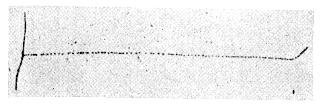| ternary particle |
<E> [MeV] |
FWHM [MeV] |
Yield |
Lifetime [s] |
| 3H |
8.2±0.6 |
7.2±0.6 |
950±90 |
|
| 4He+5He |
15.7±0.2 |
10.9±0.2 |
104 |
|
| 4He |
16.4±0.2 |
10.3±0.3 |
8264±341 |
|
| 5He |
12.4±0.3 |
8.9±0.5 |
1736±274 |
1.1*10-21 |
| 6He+7He |
12.3±0.5 |
9.0±0.5 |
270±30 |
|
| 6He |
12.6±0.5 |
8.9±0.5 |
223±26 |
|
| 7He |
11.0±1.5 |
8±2 |
47±9 |
4.1*10-21 |
| 8He |
10.2±1.0 |
10.2±1.0 |
25±5 |
|
| Li |
14.3±1.0 |
14.3±1.0 |
60±10 |
|
| Be |
17.5±1.0 |
18±1 |
175±30 |
|
| B |
21.2±1.0 |
19.3±1.0 |
13.5±4.0 |
|
| C |
26±1 |
- |
80±30 |
|
|
 Particle Accompanied 252Cf Fission:
Particle Accompanied 252Cf Fission: